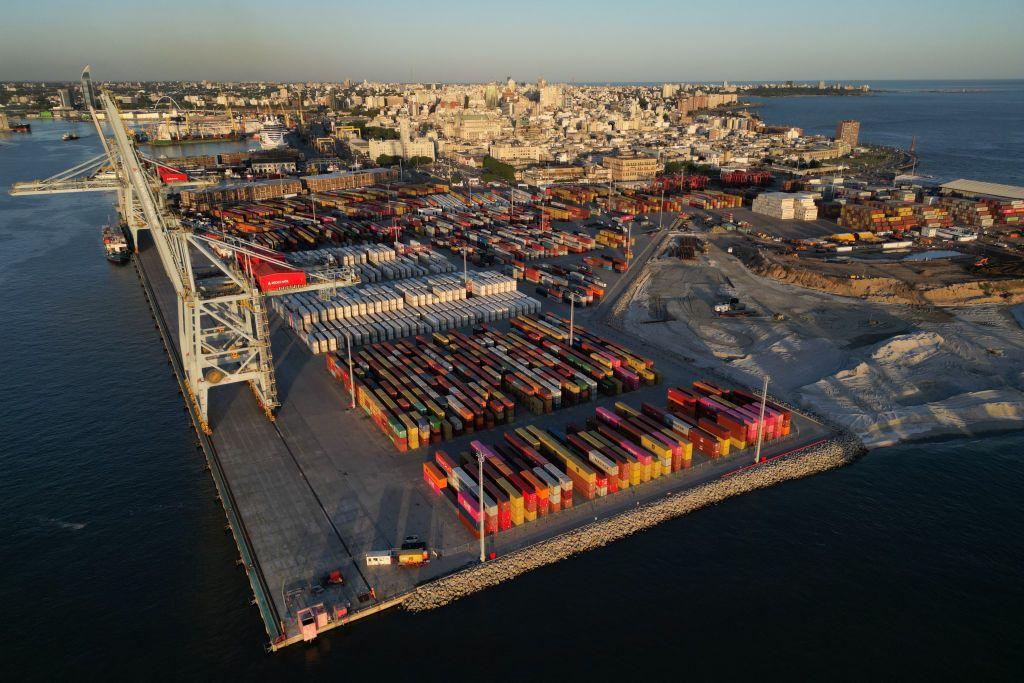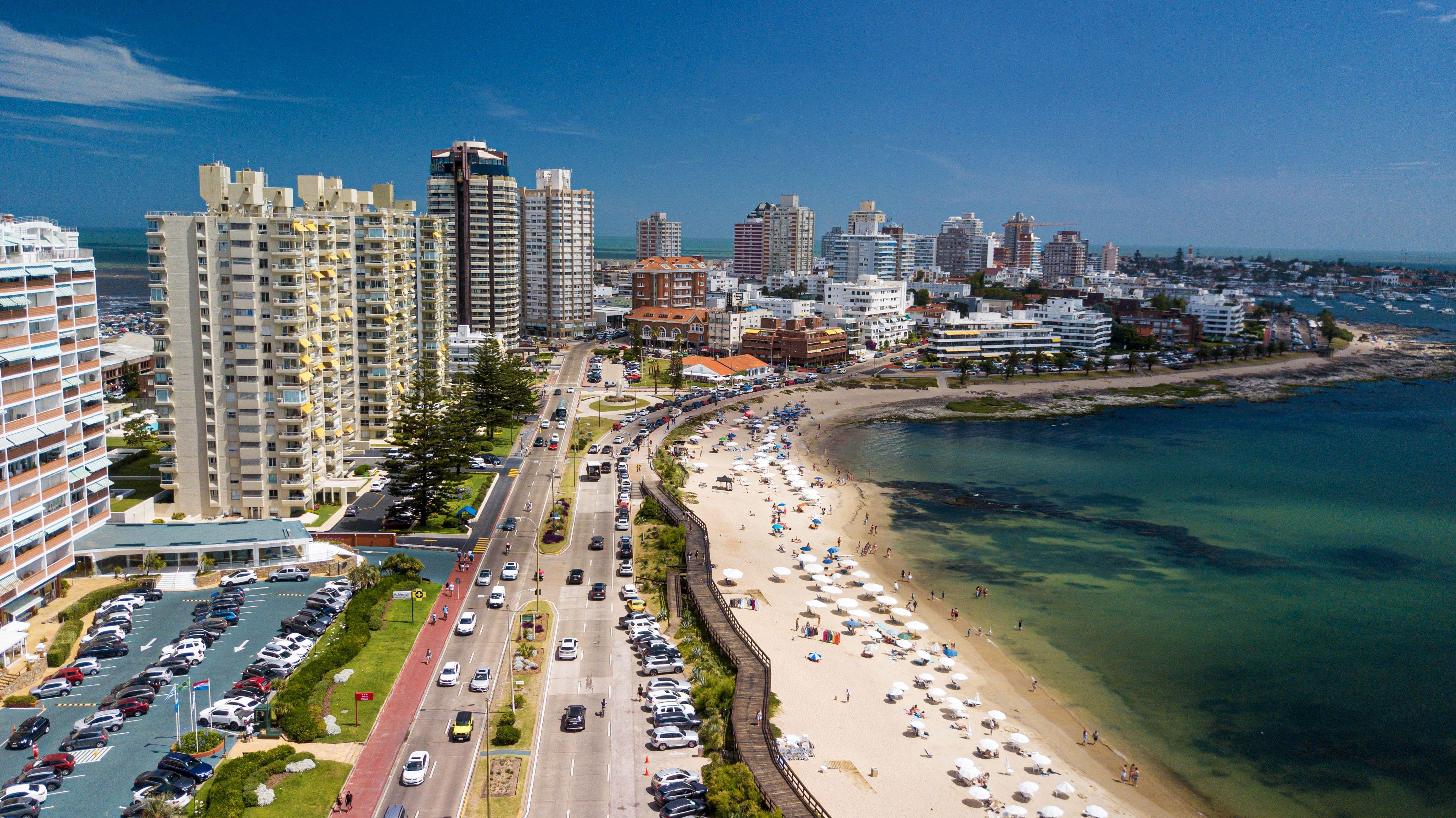When a resident of Rivera, a city bordering Uruguay, goes to the local supermarket this week, he sees that the price of a 180-gram tube of toothpaste is 243 pesos ($6.20).
If you go to a Brazilian supermarket – something you just have to cross the street to get to, because the city remains barrier-free with the name Sant’Ana do Livramento -, that same toothpaste – same brand, same weight, same version, produced in the same factory in São Paulo – you can buy it for 6.99 reais ($1.28).
LOOK: MexVen: the Mexican family that opened a Venezuelan restaurant to support migrants on their way to the United States
Toothpaste is just one example – perhaps one of the most notable – that Uruguay It’s an expensive country.
The importer brings a price to the country, but when it reaches the public its average price almost triples, according to research carried out by the Center for Development Studies (CED) at the request of the Central Bank of Uruguay and published in February. .
More pronounced is the difference between soap or deodorant, the price of which in a store or supermarket is multiplied by up to 6 in relation to the value at which it entered the country.
Based on data collected by the World Bank, CED compared the prices of around 600 products in Uruguay and 43 other countries over time, and found that on average they were 27% more expensive in the South American country.
Furthermore, developed European countries such as France, Germany or the United Kingdom presented prices lower than those paid in Rivera or Montevideo.
Only nine – Japan, Finland, Israel, Ireland, Sweden, Denmark, Switzerland, Norway and Iceland – were more expensive.
Compared to Latin America, products in Uruguay cost more than twice as much as in Bolivia, 80% more than in Mexico and 20% more than its neighbors Brazil and Argentina, Mercosur partners and where a large part of imports arrive without tariffs.
In products from hygiene and cleaningUruguay is 58% more expensive than the country average, according to the study. In food and non-alcoholic drinks, 55%. And in articles of computing and electronics, 43%.
“Country effect”
This phenomenon occurs more strongly in areas where there is practically no national production – or none at all – and must be imported, explained Ignacio Umpierrez, economist and researcher at CED, to BBC Mundo.
And the list of items that are not produced in Uruguay is very long.
Umpierrez added that the higher prices paid by Uruguayans are not about a temporary issue in the value of the Uruguayan peso in relation to other currencies, but rather It is a fact that has persisted over time.
“It’s something that responds to a country effect,” he said.
By “country effect” he refers to some conditions that make the country expensive.
The researcher and a group of colleagues found that the Uruguayan market – which is small because 3.5 million people live in the country – is concentrated in a few companies that account for a large part of these imports.

“In concentrated markets, companies’ pricing power is greater”he pointed out.
As a consequence of this lack of competition, they found that the profit per product was almost always more than half the price paid by the end consumer. In other words, something that was imported for 10, the average citizen pays more than 20.
Umpierrez described these margins as “relatively high”, although he said he did not know how many intermediaries the products pass through between the importer and the final consumer.
Uruguayan economist Sebastián Fleitas, an economics professor at the Catholic University of Chile who specializes in competition and market issues, pointed out one aspect of international trade that the country cannot change: “Uruguay is far from the world and therefore has higher transport and logistics costs“when the products do not come from the neighbors.
He added that in most countries there are higher tariffs and fees than in other regions of the world, in addition to the obligation to hire a customs broker for each import.
And it all adds up.
Barriers against competition
Fleitas told BBC Mundo that Uruguay is expensive because of “two central problems”: the lack of competition and sectors regulated by the State“where regulation has serious problems”.
“It’s a small country, where we all know each other and where there is a lot of interaction between those regulated and the regulators, which is not illegitimate but which poses some additional challenges to the defense of competition, in lobbying control legislation and the like. of the things they do, that disarming this expensive country is a set of small battles, but each one requires a lot of political capital,” he argued.
The expert said there is a long way to go, but this There are things that can be done to make the country cheaper.
These regulations create barriers such as health records for food, beverages, hygiene products and more.
“To enter a product in Uruguay, it must have health registration with the Ministry of Public Health,” explained Umpierrez. But large companies “basically own their technical records for reasons of exclusivity or commercial agreements,” he added.
This implies that, for example, if a random Uruguayan company wanted to import this toothpaste by purchasing it for US$1.28 in a Brazilian supermarket or wholesaler, the Uruguayan State would not allow it because the company does not have the product’s technical data sheet. products.
And it doesn’t matter that it’s exactly the same toothpaste that the multinational subsidiary enters.
“If we do not protect an industry, we are not protecting employment, we may be protecting the monopoly income of an importer”asked economist Alfonso Capurro, from local consultancy CPA/Ferrere.
Capurro stressed that there are regulations that “genuinely seek to protect the consumer”, but that there is “inertia and there is a set of accumulations of different regulations that have been built over time in the form of sediment”.
“Nobody made sure that this set of regulations overlapped and prevented the market from functioning better,” he said.
CPA/Ferrere prepared another study at the request of the Central Bank, in this case relating to the prices of fruits and vegetables.

Capurro, one of the economists who worked on this research, explained to BBC Mundo that the import of some of these foods is prohibited by phytosanitary rules, so only local production should be sold.
But, as he said, this regulation is not used for health purposes, but rather as a protectionist measure, since In times of internal shortages, governments allowed entry.
“This makes fruit and vegetables more expensive on average than they could be if they were imported, and that is an excessive price that we as consumers pay,” he said.
The study analyzed the value of certain fruits and vegetables in wholesale markets over time in Uruguay and Brazil. Tomatoes, for example, receive three times more in Uruguay.
“If we remove these protections from producers, the sector disappears. It’s a hidden subsidy,” noted Capurro.
At the same time, Uruguayan fruit and vegetable producers They have to work in a system with high costsCapurro pointed out.
The tax system and high energy costs
Capurro explained that another factor that affects high prices is the Uruguayan tax system.
In addition to VAT, some products are charged with other taxes that make them more expensive.
“Our tax system is a little old, it is largely based on direct taxes on consumption and not so much on taxes on people. You pay less in taxes such as income, but these are paid directly on the goods that are consumed“Capurro explained.
An example of this is fuel. Uruguay has the most expensive liter of gasoline in Latin America and the fifteenth in the world – almost half of the price is taxes.
Diesel is also expensive, because a percentage of the price per liter goes to subsidize public transport, something that is then transferred to the transportation and distribution costs of any product.
At the same time, profit margins on distribution – transportation and sales – are high because “truck drivers and gas stations are not willing to compete,” Capurro explained.
Something similar happens with electricity; Rates are among the highest in the world, in part due to investments made over the past decade to increase energy production from renewable sources outside of hydropower.
High income country
Uruguay is the Latin American country with the highest Gross Domestic Product per capita, around US$22 thousand, and this puts it in the category of high income countriesaccording to the World Bank classification.
Each Uruguayan family earns on average around US$2,500 per month, according to the National Institute of Statistics.
Despite high salaries in regional comparison, Uruguayans feel that living in their country is very expensive.
In Spain, for example, they earn around $3,200 a month, and not only do they earn more, but they also purchases cost 25% less than in Uruguayaccording to the CED comparison.
Even in comparison with countries more expensive than Uruguay, South America loses out.
“Copenhagen is expensive, but for good reason. People live very well there, they earn very good salaries and they are happy with it”, said Fleitas.
“We have low wages for the cost of living level, but at the same time high wages for productivity levels” said Umpierrez.
The CED economist pointed out the salary factor among those that make the country more expensive, because the methods for determining salaries are “much more rigid than in the rest of the countries” in his investigation.
What is cheaper in Uruguay than in developed countries It’s housing. The average price of a rental in Uruguay is around US$500, while in Spain it is twice that, according to official data.

The three economists agreed that The welfare state that Uruguay offers has its costs, and this is transferred to prices.
But some of them are beneficial to the population and others are not.
“What complicates us is that we are expensive for things that do not generate well-being for the population, but are income that goes to some businesspeople and some workers who are in these sectors” with large profit margins, summarized Fleitas.
Source: Elcomercio
I am Jack Morton and I work in 24 News Recorder. I mostly cover world news and I have also authored 24 news recorder. I find this work highly interesting and it allows me to keep up with current events happening around the world.







